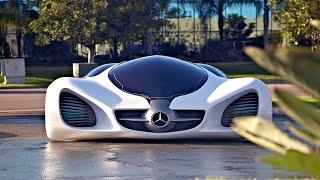Should you paint your intercooler black? Does it help to paint your intercooler black? Will painting your intercooler black increase your cars performance? No, it will not. The guys at MightyCarMods have made a fantastic (no sarcasm, it's a great video) video explaining why you should paint your intercooler black. The information they provide is great, but the conclusion is wrong. Let's take a look at why.
Mighty Car Mods Video
https://www.youtube.com/watch?v=f1QL9veQaNg
Related Videos:
Intercoolers - https://www.youtube.com/watch?v=6nhLE1LI2BQ
Cold Air Intakes - https://www.youtube.com/watch?v=Hiod1c2Py70
How could heat rejection by convection be improved by adding an insulating layer? The real answer? It can't. For those of you who haven't checked out the video, it's fascinating and I highly recommend it. It's actually a great video, and a well performed test, but it ends with the wrong conclusion.
Lets talk about radiation and convection for a moment, and why one might think they should paint their radiator black. It all comes down to emissivity. Emissivity (on a scale of 0-1) is the rate of radiation that can be emitted from a surface. In simple terms, how much heat it gives off through radiation.
Aluminum Foil: E: 0.07,
Black Paint: E: 0.98
The higher the number, the higher the rate of radiation. Blackbody, which has the highest rate of radiation, has an emissivity of 1.
Black bodies give off the greatest amount of radiation. So one might think that making an intercooler black would improve it's performance, because it would give off more heat. But this is not the case, because intercoolers are not designed to dispose of heat via radiation, but via convection.
Radiation: Does not rely on movement of molecules.
Convection: Does rely on the movement of molecules passing by the hot/cool object which is giving off heat.
Electronical Stig is correct in his statement that emissivity does not have to do with convection, but intercoolers are designed to work off of convection, not radiation! Why? For starters, because your car moves. That's also why your radiator has a fan, for when it's stopped it can supply airflow through it.
If the outlet with no paint has a dT of 100, and the outlet of the black intercooler has a dT of 97, the intercooler with no paint is rejecting more heat. This means the air inlet temperature of the engine will be less for a non-painted intercooler!
In the MightCarMods experiment, the fan was very far away from the intercooler, meaning airflow was actually quite low. I would imagine as the fan gets closer, the difference in temperature between the black and sliver intercoolers would widen further. Intercoolers are designed for convection, not radiation. If your car is moving, your intercooler is going to provide you better performance with minimal insulation. Aluminum is commonly used because it rejects heat very quickly under convection A simple example, touching aluminum foil immediately after pulling it out of the oven. I would NOT recommend touching aluminum foil painted black directly after pulling it out of the oven. (Don't touch hot stuff, regardless).
There is not a single car manufacturer which comes with a black intercooler stock (to my knowledge). Is this because they don't understand emissivity or how to design an intercooler? Is it because this a new secret and now the industry will suddenly change? Absolutely not. Some of the most brilliant minds are behind automotive engine design, and the reason intercoolers are not painted black is because intercoolers are meant to reject heat via convection, not radiation.
Disadvantages:
- Insulation, hinders convection by adding an additional layer which heat much travel through, prior to being rejected
- More restrictive, decreases airflow through the intercooler, preventing proper convection
- If the intercooler is exposed to sunlight, which many are (especially with removed bumpers), the black intercooler will absorb a lot of the heat, where as the aluminum intercooler actually does a very good job of reflecting the heat.
- Other hot objects (exhaust manifold, engine, turbo, etc.) will put more radiation into the intercooler if it is painted black, heating up the intake charge.
- WARMER AIR INTAKE TEMPERATURE
How much you're going to decrease your performance by is highly dependent on many factors. In many cases, it may be a small difference, and not worth noting. The major point is, you will not see an advantage from painting your intercooler black, unless your car never moves, and you don't use convection for cooling the intake charge. Unfortunately, or fortunately, your car moves, and it cools the intake charge using convection, so the conclusion.
Do not paint your intercooler black.
And don't forget to check out my Facebook page:
http://www.facebook.com/engineeringexplained
New videos every Wednesday!
Mighty Car Mods Video
https://www.youtube.com/watch?v=f1QL9veQaNg
Related Videos:
Intercoolers - https://www.youtube.com/watch?v=6nhLE1LI2BQ
Cold Air Intakes - https://www.youtube.com/watch?v=Hiod1c2Py70
How could heat rejection by convection be improved by adding an insulating layer? The real answer? It can't. For those of you who haven't checked out the video, it's fascinating and I highly recommend it. It's actually a great video, and a well performed test, but it ends with the wrong conclusion.
Lets talk about radiation and convection for a moment, and why one might think they should paint their radiator black. It all comes down to emissivity. Emissivity (on a scale of 0-1) is the rate of radiation that can be emitted from a surface. In simple terms, how much heat it gives off through radiation.
Aluminum Foil: E: 0.07,
Black Paint: E: 0.98
The higher the number, the higher the rate of radiation. Blackbody, which has the highest rate of radiation, has an emissivity of 1.
Black bodies give off the greatest amount of radiation. So one might think that making an intercooler black would improve it's performance, because it would give off more heat. But this is not the case, because intercoolers are not designed to dispose of heat via radiation, but via convection.
Radiation: Does not rely on movement of molecules.
Convection: Does rely on the movement of molecules passing by the hot/cool object which is giving off heat.
Electronical Stig is correct in his statement that emissivity does not have to do with convection, but intercoolers are designed to work off of convection, not radiation! Why? For starters, because your car moves. That's also why your radiator has a fan, for when it's stopped it can supply airflow through it.
If the outlet with no paint has a dT of 100, and the outlet of the black intercooler has a dT of 97, the intercooler with no paint is rejecting more heat. This means the air inlet temperature of the engine will be less for a non-painted intercooler!
In the MightCarMods experiment, the fan was very far away from the intercooler, meaning airflow was actually quite low. I would imagine as the fan gets closer, the difference in temperature between the black and sliver intercoolers would widen further. Intercoolers are designed for convection, not radiation. If your car is moving, your intercooler is going to provide you better performance with minimal insulation. Aluminum is commonly used because it rejects heat very quickly under convection A simple example, touching aluminum foil immediately after pulling it out of the oven. I would NOT recommend touching aluminum foil painted black directly after pulling it out of the oven. (Don't touch hot stuff, regardless).
There is not a single car manufacturer which comes with a black intercooler stock (to my knowledge). Is this because they don't understand emissivity or how to design an intercooler? Is it because this a new secret and now the industry will suddenly change? Absolutely not. Some of the most brilliant minds are behind automotive engine design, and the reason intercoolers are not painted black is because intercoolers are meant to reject heat via convection, not radiation.
Disadvantages:
- Insulation, hinders convection by adding an additional layer which heat much travel through, prior to being rejected
- More restrictive, decreases airflow through the intercooler, preventing proper convection
- If the intercooler is exposed to sunlight, which many are (especially with removed bumpers), the black intercooler will absorb a lot of the heat, where as the aluminum intercooler actually does a very good job of reflecting the heat.
- Other hot objects (exhaust manifold, engine, turbo, etc.) will put more radiation into the intercooler if it is painted black, heating up the intake charge.
- WARMER AIR INTAKE TEMPERATURE
How much you're going to decrease your performance by is highly dependent on many factors. In many cases, it may be a small difference, and not worth noting. The major point is, you will not see an advantage from painting your intercooler black, unless your car never moves, and you don't use convection for cooling the intake charge. Unfortunately, or fortunately, your car moves, and it cools the intake charge using convection, so the conclusion.
Do not paint your intercooler black.
And don't forget to check out my Facebook page:
http://www.facebook.com/engineeringexplained
New videos every Wednesday!
- Category
- Autos & Vehicles













Comments